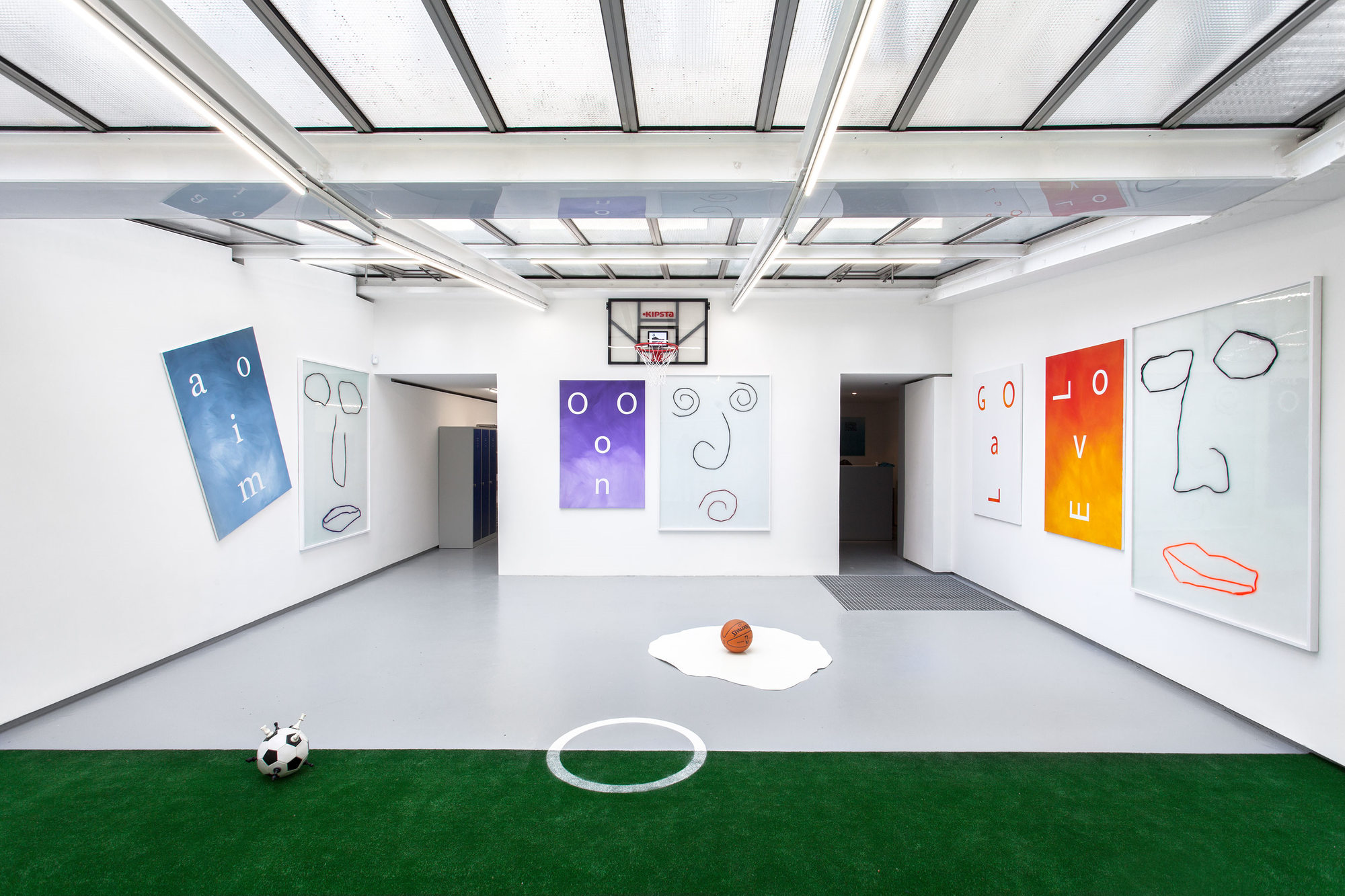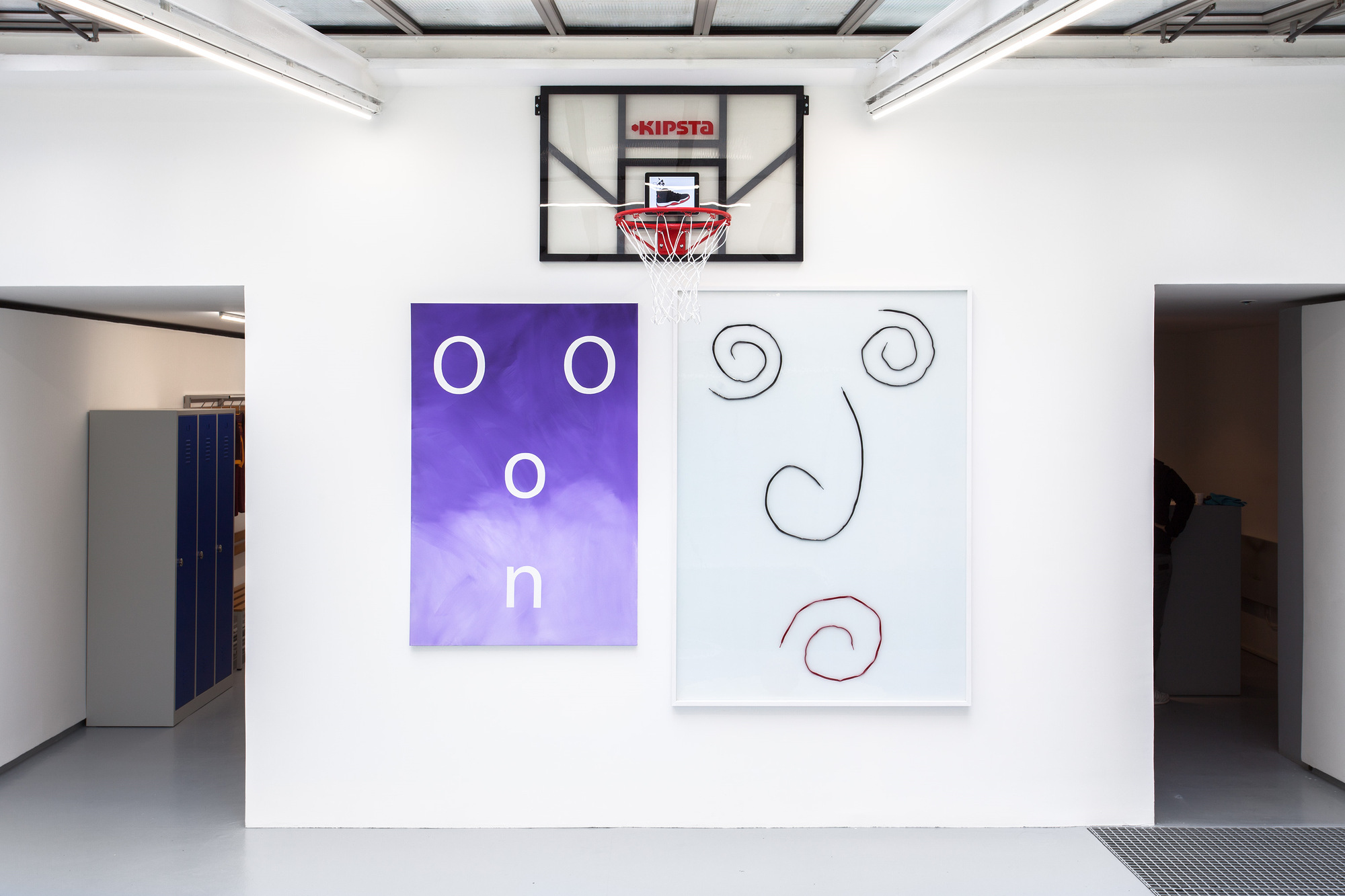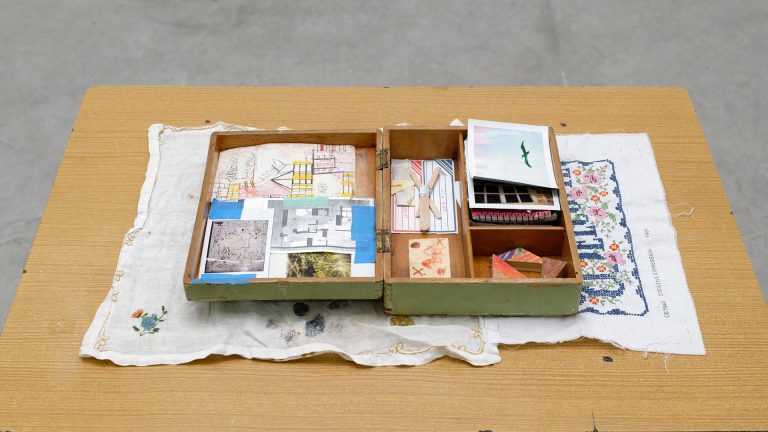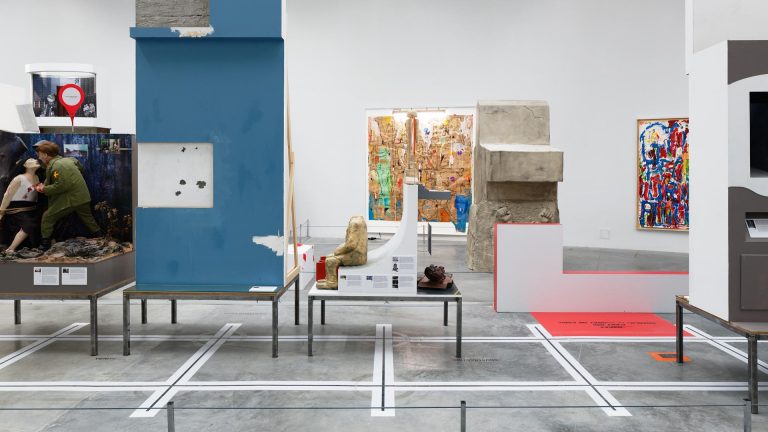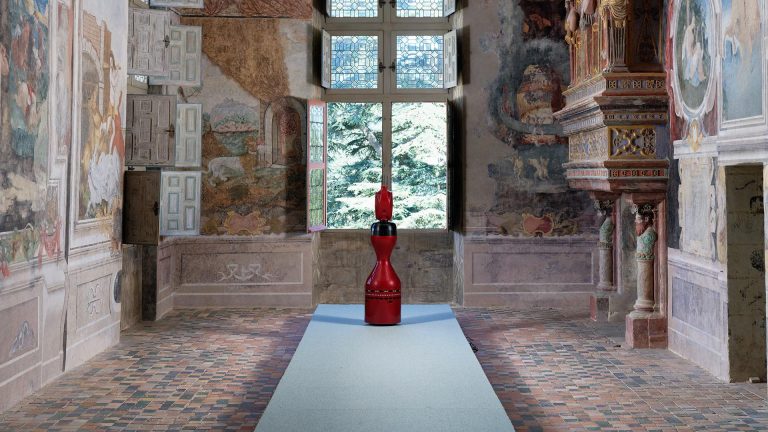Artist: Gabriele de Santis
Exhibition title: We’re Short a Guy
Venue: Valentin, Paris, France
Date: October 22 – November 21, 2015
Photography: images copyright and courtesy of the artist and Valentin, Paris
PREFACE
How will 2015 be preserved and then portrayed by time? What will remain of its language, its symbols and its aesthetic? How will the filter of time represent this historic transition? These are all questions that are hard to answer today. We lack the necessary critical detachment, for we are too closely involved in the creative and constructive process to understand what might become iconologic. Yet Gabriele De Santis’ vision appears to insist on these themes, with no fear of direct confrontation with the present and with its consequent reinterpretation. The artist does not take from the past, nor does he nostalgically quote from existing sources, but rather adopts the lexicon that accompanies us all, every day, and creates a subtle, alluring portrait of the contemporary world. Gabriele De Santis questions the codes of a fast-paced society that is constantly forced to perform demanding success, giving space to a translation of a system, the construction of a contemporary iconography and of an aesthetic of the present.
AN IMAGERY OF SPORTS
SOCCER – A Forceful Representation
Children brought up in the 1980s-early 1990s might be familiar with Captain Tsubasa, a cartoon created by Y ichi Takahashi focusing on the adventures of a Japanese youth soccer team and its captain Tsubasa Oozora. Along with Genzo Wakabayashi, Taro Misaki, Ryo Ishizaki, Kojiro Hyug, he played acrobatic actions in (very) slow motion, on what seemed to appear as huge fields, violently kicking a steaming ball which ended up burning the net, smashing the bleachers, bruising the goalkeeper. The matches seemed to be endless and children’s expectations rose at every episode, while they craved for the next.
The first lesson we learned from Captain Tsubasa was to play together, relate to our peers, encourage them or argue with them. Our ambition was to imitate our cartoon idols. Soccer matches were improvised everywhere and there were infinite debates on which character each child would play. After a few matches we also learned that Tsubasa’s and his gang’s tactics and technical abilities didn’t belong to a world in which the force of gravity existed, yet we choreographed incredible actions making believe we were able to replicate boomerang shots, overhead kicks, somersault dribbles, spinning balls. Our colorful imagination gave us the chance to play, feel brave and love our teammates, even those we weren’t friends with. Of course I can’t deny that we also wanted to win. Some healthy competition was part of the game. The awareness of interaction, rivalry, training, action and outcome, began to shape in our young minds.
The second lesson we learned was that sport was made of agony and pain. It was a serious issue, or better a heroic one. Captain Tsubasa’s trail and sacrifice to soccer was representing the struggle of an individual towards success. We were the witnesses of how a simple character could turn into an icon. Yet the individual was part of a team. As all real heroes, he served a shared cause. Perhaps, as kids, we still weren’t critically mature to understand the concept fully, yet unconsciously we had an idea of what fatigue, concentration, performance, interplay and its results meant.
In sum, soccer was a magical game, which became part of our lives through a cartoon that gave us the excuse to play together using our imagination, feeling part of team, however it was obvious that leadership and success derived from sacrifice and concentration. Soccer players, whether manga characters or those belonging to the team we supported, were heroes who deserved to stand in their role and position. Careful: they were heroes, not stars, yet.
BASKETBALL – Powerful single talent
Michael Jordan and basketball go hand in hand. Probably he is the only player that non-basketball fans, such as myself, happen to know. However I did grow up in the U.S. during the 1980s and 1990s and do vividly remember hoops placed in backyards, in public parks, in school gyms. Basketball was the sport par excellence, the most democratic, pluralistic, accessible and popular game in the country and it couldn’t be completely ignored. Bounce passes that became chest passes that then finished up in slam dunks could be seen at every corner. Like it or not, everyone knew its basketball ABC.
My imagery of the sport today is probably embodied by Space Jam (1996), one of those movies that adults of a certain age now hold with nostalgic reverence: a classic generational touchstone. In Space Jam Bugs Bunny and his gang challenge to a basketball game the Nerdlucks, aliens who want to kidnap and export the Looney Tunes in order to animate their amusement park in outer space. Only triumphing against the Monstars team, composed of space creatures who absorbed the talents of top NBA professionals can the Tunes keep their freedom. Having no chance against the speedy, powerful, monstrously gifted alien-players, Bugs Bunny and Daffy Duck recruit Michael Jordan who takes on the monumental task of helping them out. At a certain point of the tournament when, despite the loony actions, everything seems lost, the Tunes team becomes short a guy. Bill Murray steps in coming to its rescue and the game is won thanks to Jordan’s talent enhanced by cartoon physics. Only a star power, disguised as a heroic act, saves the Loony Tunes from their plight.
Space Jam was quite a brilliant comedy, encompassing a hopeless optimistic and light hearted American attitude. The portrait of basketball presented by the film was that of a friendly and entertaining sport in the hands of single-powerful-talented players.
Where had the training, sacrifice, concentration, interaction, collaboration and team spirit gone? Sp nothing of the team practicing, preparing a strategy, or deciding its roster. Jordan’s pregame speech recited: “Let’s just go out and have fun”, and when the Tunes were down 77-76 with 10 seconds left, Jordan called timeout and gave the following instructions: “Somebody steal the ball, give it to me, and I’ll score before time runs out.” Basically what gets through is that the individual makes its way before the group: a symbol of how an NBA team is often hostage to the best player in the lineup whose actions are beyond reality. A marketing of individuals over teams, highlight clips over plays. When playing, upper echelons of talent determine a hierarchy within the group and its representation: single men who want to score, with big egos, aware of their power. The star system appropriated basketball in a child’s imagery before time.
SOCCERBASKET – The revelation of a self
The two representations. mentioned above, according to sports sociology give us the picture of how culture and values influence sports, and how sports influences culture and values in different societies. The representation of the two sports evidently occupies opposite poles.
Now: Gabriele De Santis, is challenging us to a new game in which soccer and basketball share a field. On one side, we’re Captain Tsubasa on the other we’re Michael Jordan. Entering the gallery a locker room greets the spectators. It is a threshold and a gateway: a space in which to get ready, to concentrate, to get excited. Shall we act as stars or work as a team? However, another question surprises us. Here, surrounded by A.S. ROMA (it couldn’t have been any other soccer team in the world) jerseys of disappeared top conceptual Italian artists-players, we actually begin asking ourselves the deeper meaning of a player within a system. Boetti, Burri, de Dominicis, Fontana, Manzoni, Merz. Top stars or heroes? Individual players or manufacturers of a shared discourse? If they were presented with the chance to play together as team, what kind of interaction and result would have been produced? The move of associating milestones of an exclusive cotemporary intellectual visual cultural system with a popular and apparently anti-academic one could seem thoughtlessly irreverent, however they have much more in common than what seemingly one thinks. Artists and sport players are associated in their philosophy of life as well as in their iconic representation.
We’re ready for the bizarre and schizophrenic match. The bleachers are crowded and supporters, fans and flâneurs raucously cheer, roar and encourage us with explicit text messages. Only on the combine-field will we decide which position to assume, perhaps consequently revealing something about ourselves.
– Ilaria Gianni
Gabriele de Santis, Albert, 2015
Gabriele de Santis, Philippe, 2015
Gabriele de Santis, Frédérique, 2015
Gabriele de Santis, Domenico, 2015
Gabriele de Santis, Anne-Laure, 2015
Gabriele de Santis, foul, 2015
Gabriele de Santis, LOVE, 2015
Gabriele de Santis, miao, 2015
Gabriele de Santis, nooo, 2015
Gabriele de Santis, GOaL,2015
Gabriele de Santis, Splash American Breakfast, 2015
Gabriele de Santis, Splash American Breakfast, 2015
Gabriele de Santis, Fontana, Boetti, 2015
Gabriele de Santis, Fontana, Boetti, 2015
Gabriele de Santis, Manzoni, Merz, Burri, 2015
Gabriele de Santis, Manzoni, Merz, Burri, 2015
Gabriele de Santis, Andrea’s first pair of Jordan, 2015
Gabriele de Santis, Andrea’s first pair of Jordan, 2015
Gabriele de Santis, Impossible match, 2015
Gabriele de Santis, Impossible match, 2015










